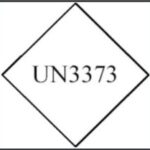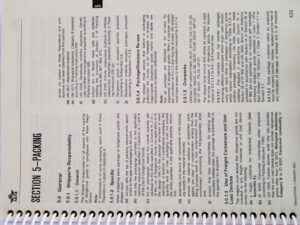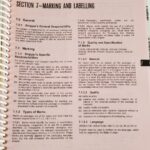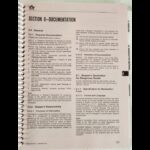The International Air Transport Association (IATA) publishes a new edition of its Dangerous Goods Regulations for each calendar year. In effect for the remainder of calendar year 2020 is the 61st edition. Beginning January 1, 2021 all transport of dangerous goods subject to IATA’s Dangerous Goods Regulations must be in compliance with the 62nd edition. The purpose of this article is to summarize the significant changes in store for 2021 in the 62nd edition.
Before we begin…
- UPDATE: On January 18, 2021 IATA posted it’s first Addendum to the 62nd Edition of the IATA Dangerous Goods Regulations. These revisions are effective as of January 1, 2021.
- UPDATE TO THE UPDATE: On February 23, 2021 IATA posted Addendum II to the 62nd Edition of the IATA Dangerous Goods Regulations. These revisions are effective January 1, 2021.
- The IATA Dangerous Goods Regulations is a “field manual” of the Technical Instructions of the International Civil Aviation Organization (ICAO).
- The ICAO Technical Instructions are updated every two years. However, the IATA Dangerous Goods Regulations are updated every calendar year due to frequent changes within the airline industry and a desire for greater safety and efficiency in air transportation of dangerous goods.
- What’s inside the IATA Dangerous Goods Regulations? Good question:
The 62nd Edition of the IATA Dangerous Goods Regulations is effective from January 1, 2021 to December 31, 2021
- Section 1 – Applicability: shipper and operator responsibilities, training, security, incident reporting
- Section 2 – Limitations: forbidden and hidden goods, storage and transport quantities, transport by post, transport by passengers/crew, limited quantity exception, excepted quantity exception, State and operator variations
- Section 3 – Classification: defining criteria of hazard classes and divisions, multiple hazards, Packing Group
- Section 4 – Identification: list of dangerous goods (blue pages), numerical cross-reference list, special provisions
- Section 5 – Packing Instructions (yellow pages): Packing instructions – fully regulated and limited quantity – for all dangerous goods by passenger and cargo aircraft (PAX) and cargo aircraft only (CAO)
- Section 6 – Packaging Specifications: inner packaging, UN, construction and testing, limited quantity
- Section 7 – Marking and Labeling (pink pages): package marks, hazard labels, handling labels
- Section 8 – Documentation (more pink pages): shipper’s declaration for dangerous goods, air waybill
- Section 9 – Handling: storage, loading, inspection, information provision, reporting, training, document retention for operators (air carriers)
- Section 10 – Radioactive material (a few more pink pages): transport, limitations, classification, identification, packing, testing, labelling, documentation, handling
- Appendices: A-I
- Index
|
Contact me with any questions you may have about the transportation of hazardous materials by air, highway, vessel, or rail International and Domestic Daniels Training Services, Inc. 815.821.1550 |
If a visual will help, watch this short video describing the IATA Dangerous Goods Regulations.
Scope and Applicability:
- As noted above, this article will only address the significant changes to the 62nd Edition of the IATA Dangerous Goods Regulations for 2021.
- This article is only a summary of a document available on the IATA website: Significant Changes and Amendments to the 62nd Edition (2021). Read it for a more thorough description of these changes and amendments for 2021.
- Even the document available from IATA is not meant to be an exhaustive listing of all changes to the 62nd Edition. Make sure you do your research to confirm compliance.
- This short video explains the reference marks used in the IATA Dangerous Goods Regulations to indicate changes to the DGR from the previous edition.
Significant Changes and Amendments to the 62nd Edition of the IATA Dangerous Goods Regulations for 2021:
Section 1 – Applicability
1.5 – Training Requirements. The training requirements have been revised to implement a competency-based approach to dangerous goods training and assessment. These changes were originally shown in Appendix I – Impending Changes of the 61st Edition (2020) and are now found in subsection 1.5 of the 62nd Edition for 2021. During a two-year transition period (until December 31, 2022) the training requirements from the 61st Edition may continue to be used. For this reason subsection 1.5 from the 61st Edition has been moved to Attachment A of Appendix H in the 62nd Edition.
Competency-based training is an effort by IATA to provide training focused on the key competencies and skills that each employee needs in order to perform specific tasks in the packaging, loading, and shipping of dangerous goods by air. What it means is that as of 12.31.22 your IATA Dangerous Goods training will have to change.
Other changes were made to the list of exceptions at 1.2.7 to include dangerous goods required for preservation of organs intended for transplant and pest management activities and new entries were added to the indicative list of high consequence dangerous goods in Table 1.7.A.
Section 2 – Limitations
Subsection 2.3 – revised to allow for passengers to carry the following dangerous goods:
- Nickel-metal hydride or dry batteries
- Self-inflating safety device and spare gas cartridges
- Portable electronic devices (PED) and spare batteries for PED
Subsection 2.4 – revised to clarify the packing instructions (PI 954) required when dry ice is used as a refrigerant for UN3373 (Biological substance, category B) when the dangerous good is to be transported by post.
|
Contact me the next time your USDOT, IATA (air), or IMO (vessel) training is due to expire. |
Section 3 – Classification
- 3.6.2.5 – revised to add a new criteria to address solid medical waste containing Category A infectious substances.
- 3.8.2 – revisions to the criteria for assignment of Packing Groups to corrosive substances and mixtures.
Section 4 – Identification
Several amendments to the List of Dangerous Goods in subsection 4.2. Including:
- Addition of UN0511, UN0512, & UN0513 for Detonators, electronic in divisions 1.1B, 1.4B, and 1.4S respectively
- Addition of new proper shipping name, Dangerous goods in articles to UN 3363
- Addition of UN3549 for Medical waste, Category A, affecting animals or humans
- UN2216, Fish meal, stabilized is no longer forbidden. It is now permitted on both passenger aircraft and cargo aircraft only
- Packing instruction number for UN3291, Biomedical waste, n.o.s., Clinical waste, unspecified, n.o.s., Medical waste, n.o.s., and Regulated medical waste, n.o.s. has been changed from PI 622 to PI 621
- “Stabilized” was added to the proper shipping name for UN2522, 2-Dimethylaminoethyl methacrylate
Amendments to special provisions in subsection 4.4 include:
- Inclusion of the State of the operator as an approving authority (previously it was only the State of origin) for lithium batteries shipped under special provisions A88 (prototypes) and A99 (more than 35 kg OK for cargo aircraft only).
- Special provisions A88 and A99 revised to require the packing instruction number shown on the Shipper’s Declaration be the one identified in the special provision from the Supplement to the ICAO Technical Instructions: PI 910 for A88 and PI 974 for A99.
- To reflect the addition of a new proper shipping name to UN3363 (Dangerous goods in articles), the words “machinery or apparatus” in special provision A107 were replaced by “article”.
- Revisions to A145 for waste gas cartridges and waste receptacles, small, containing gas.
- Significant revisions to A154 to address transport of damaged and defective lithium batteries.
- Revision to A201 to allow for the transport of lithium batteries as cargo on passenger aircraft if urgent medical need and with approval of State of origin and operator.
New special provisions:
- A215 permits shipper to use a listed proper shipping name as the technical name for UN3077 and UN3082.
- A219 (assigned to UN2216, Fish meal, stabilized) specifies antioxidants must be added to fish meal to prevent spontaneous combustion.
Section 5 – Packing
- 5.0.2.5 – new text added clarifies a packaging may meet more than one tested design type and may bear more than one UN specification mark.
Revisions to packing instructions include:
- PI 378 and PI 972 – permits fuel tanks of machinery to have up to 1/4 of a tank of fuel where the machinery cannot be loaded other than upright.
- PI 457, PI 463, PI 465, PI 470, PI 471, PI 479, PI 482, PI 490, PI 491, and PI 555 – single packagings permitted by these packing instructions now align with those permitted in the UN Model Regulations and elsewhere in the DGR.
- PI 492, PI 870, PI 971, and PI 972 – cells and/or batteries must be packed directly into the outer packagings.
- PI 622 – renumbered to PI 621 to align with the UN Model Regulations.
- PI 650 and PI 959 – diamond-shaped mark with the UN number must appear on one side of the package.
- PI 956 – includes reference to UN 2216, Fish meal, stabilized.
- PI 957 – allows for both combination and single packagings.
- PI 962 – includes reference to the new proper shipping name Dangerous goods in articles and to use “article’ or “articles” in place of “machinery or apparatus”.
- PI Y963 – a unit load device prepared by a single shipper may contain dry ice as a refrigerant for consumer commodities.
- PI 965 to PI 970:
- damaged or defective lithium cells or batteries are forbidden for air transport.
- when section II of packing instructions are followed and packages from multiple packing instructions are on one air waybill, the compliance statement may be combined into a single statement. Examples are included in 8.2.7.
- PI 967 and PI 970:
- equipment must be secured against movement in the outer packaging.
- multiple pieces of equipment in a package must be packed to prevent damage due to contact with other equipment in the package.
|
Daniels Training Services, Inc. 815.821.1550 |
Section 6 – Packaging Specifications and Performance Tests
Revisions to Section 6 include:
- 6.0.4.1 and 6.5.3.1 – clarification of size of UN specification marks on packagings.
- 6.0.4.2.1(f) – clarification of the application of the year of manufacture for plastic drums and jerricans.
- 6.0.7 – new provision for packagings tested to more than one design type.
- 6.1.7.2 – revision to maximum capacity for metal aerosols.
- 6.2.2.7 and 6.2.7.7 – suitable internal protective coatings or treatments must be applied to aluminum and other metal drums if not compatible with contents. This provision already exists for steel drums and steel and aluminum jerricans.
- 6.4.2 – revisions to the ISO references for UN cylinders and closed cryogenic receptacles.
Section 7 – Marking and Labelling
- 7.1.4.4.1 – the height of the UN/ID number and the letters “UN” or “ID” on packages may be smaller than 12 mm depending on the size of the package.
- 7.1.5.5.3 – minimum dimensions of lithium battery mark have been revised.
 Section 8 – Documentation
Section 8 – Documentation
- 8.1.6.9.2, Step 7 – requirements for description of multiple overpacks on Shipper’s Declaration revised. An additional example is provided at Figure 8.1.Q.
- 8.2.1 – statement required on the air waybill when dangerous goods are offered on a Shipper’s Declaration revised to align with the language used on electronic documentation: Shipper’s Declaration is not “attached” but is “associated” with the air waybill. There is a two year transition period during which time either wording is acceptable.
|
If you like this article, please share it using any of the social media platforms identified at the bottom of this article. |
Section 9 – Handling
- 9.1.9 – now mandatory (previously recommended) that operators include the transport of dangerous goods as part of their safety risk assessment process.
- 9.6.4 – requirement to provide report to State of origin deleted.
Section 10 – Radioactive Materials
Revisions to Section 10 include:
- 10.0.1.1 – provisions for transport are based on Revision 1 of IAEA Safety Standards Series No. SSR-6.
- replacement of “radiation level” by “dose rate”.
- Table 10.3.1 – addition of new radionuclides for Germanium, Iridium, Nickel, Strontium, and Terbium.
- 10.8.8.1 – revision to statement on the air waybill when dangerous goods are offered on a Shipper’s Declaration.
Appendix A
Changes, deletions, and additions in the glossary include:
- addition of definitions for carry-on and checked baggage.
- addition of definition for detonators, electronic.
- addition of definition for dose rate.
- deletion of “radiation level”.
- revision to the definition for self-accelerating decomposition temperature.
|
Like this article? Subscribe to my Monthly Newsletter No marketing emails! |
Appendix C
- Table C.2 – changes to the list of currently assigned organic peroxides.
Appendix D
- updates to contact information for competent authorities.
Appendix E
- E.1 – changes to list of UN Specification Packaging Suppliers.
- E.2 – changes to list of Package Testing Facilities.
Appendix F
- revisions to list of Sales Agents (F.2), IATA Accredited Training Schools (F.3 – F.5) , and IATA Authorized Training Centers (F.6).
Appendix H
- guidance material on development and implementation of competency-based training for dangerous goods has been revised based on input from training providers and member airlines.
- Subsection 1.5 from the 61st Edition has been moved to Attachment A in Appendix H.
|
Contact me with any questions you may have about the transportation of hazardous materials by air, highway, vessel, or rail International and Domestic Daniels Training Services, Inc. 815.821.1550 |
Step 1: Purchase the 62nd Edition (2021) of the IATA Dangerous Goods Regulations
Step 2: Review the regulations to identify any changes from the previous edition that affect your compliance.
Step 3: Contact me for in-depth site-specific IATA Dangerous Goods Training.





 Section 8 – Documentation
Section 8 – Documentation